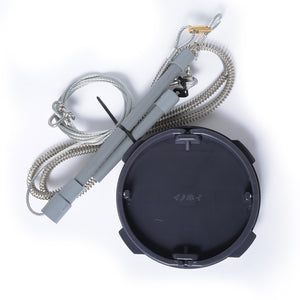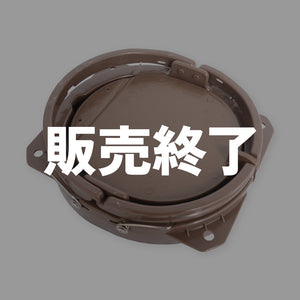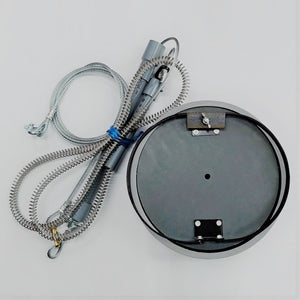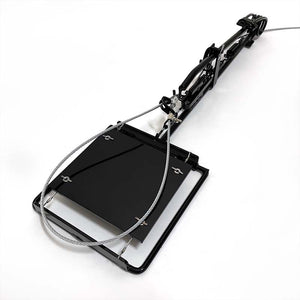"Kukuri Trap" is often used to catch beasts that damage the fields. The wire is set in the animal path, and when the animal steps into the place where it is set, the wire tightens and catches the animal's leg.
There are various rules and regulations regarding the use of kukuri traps from the viewpoint of human safety and the protection of wild birds and beasts. Unknowing violations can lead to accidents, and you may be subject to penalties for violating laws and regulations, so be sure to understand them.
It is illegal to set up traps without a license.
If a person without a hunting license or registration as a hunter uses a trap to capture a wild animal, it is a violation of the law. Violators will be punished by imprisonment with work for up to one year or a fine of up to 500,000 yen, and the hunting equipment used will be confiscated.
Get a hunting license
A hunting license is required to capture wild animals. There are three types of hunting licenses: first-class gun hunting, second-class gun hunting, trap hunting license, and net hunting license.
To get a trapping license, you have to pass an exam. Examinations are held several times a year, and applications must be submitted no later than one month prior to the examination date. You can check the test date and application deadline schedule on the prefectural website. When applying for the exam, you may need a photo ID and a medical certificate, so if you are going to take the exam, check the necessary documents and applications with the department in charge of the prefecture where you will be hunting, and prepare early. prize.
In most cases, training sessions are held prior to hunting trials. Preliminary classes are held free of charge depending on the region, so be sure to participate. If there is a gun shop in your neighborhood, they may be able to help you with the application process or organize pre-course training, so it would be a good idea to ask them about it.
In addition, when participating in the seminar, I think that you will purchase the textbook (hunting reading book and hunting license exam sample collection). The trap hunting license exam is less difficult than the gun hunting exam, and the pass rate tends to be higher, but I think it is difficult to pass without preparation. Make sure you memorize the content of the text before the exam.
The text describes actions that are prohibited when hunting. For example, the prohibition of hunting by suspending prey in the air, the prohibition of hunting in wildlife sanctuaries, rest areas, public roads, city parks, shrine precincts, cemeteries, etc. where the areas are clearly marked. It will be a part of the exam that will be asked a lot, so you need to keep it in mind when you actually set a trap.
The exam consists of a first exam (written test) and a second exam (identification of target animals to be hunted, identification of legal traps, practical trap setting). If you fail the first exam, you cannot take the second exam. I think the contents of the second exam will be explained in the pre-seminar. If you keep that in mind and take the exam calmly, you should be fine.
After passing the exam, you will receive a hunting license. Hunting licenses are valid until September 14th, three years after receiving the license (it is written on the license). Let's.
Don't forget to register as a hunter
In Japan, the hunting system is regulated by law, and the period during which hunting is allowed (hunting period) is determined. The hunting season is generally from November 15th to February 15th of the following year (October 1st to January 31st of the following year in Hokkaido).
Therefore, hunting activities such as catching with traps outside of the period will be a violation of the law, and may result in penalties and cancellation of the hunting license. In the case of wild boars and deer, some areas have extended periods, so be sure to check in advance.
In addition, when hunting during the hunting season, it is necessary to register as a hunter in the hunting area every year. Hunting registration requires payment of hunting tax and registration fee.
When you register for hunting, you will be issued a registration card, but you must carry this registration card with you when hunting, and present it when asked by national or local government officials, police officers, or other related parties. It is stipulated that you must In addition, badges called insignia must also be worn on hats, vests, etc.
*In addition to capturing by hunting, there is also a system of capturing harmful birds and beasts. It is common for a city hall, etc., to send a request for capturing harmful birds and animals to the harmful bird and beast extermination team in charge of the area. The catcher who receives the request must apply for a capture permit. In order to participate in an extermination team, not only a hunting license but also experience and achievements in capturing are often required.
Be careful not to violate the tools you use
The tying trap has a structure in which the wire tightens when the animal puts its foot into the wire loop, but there is a regulation on the diameter of this loop and it cannot be used if it exceeds 12 cm. However, in light of the fact that the damage caused by wild boars and deer has not decreased, regulations on the diameter have been relaxed in many areas. It is a good idea to check in advance with the local government department in charge of the area where you set the trap.
In addition, the trap must be fitted with metal fittings to prevent excessive squeezing of the legs of the animal to be captured. In addition, when catching wild boars and deer, it is necessary to use wires with a thickness of 4 mm or more, and to prevent twisting of the wires, it is necessary to attach a "sarkan" to the trap.
There are also restrictions when setting traps.
Compared to other traps, tying traps are easier to set, so you might think that if you set a lot of them, your catch rate will go up, but the law stipulates that one person can set up to 30 tying traps. I'm here.
After setting the traps, you will basically have to look around the place where you set them every day, so if there are too many, it will be difficult to manage. Try to set traps that you can manage properly.
Once captured, it is prohibited to leave the prey unattended. If you weaken it and starve it to death, it may be considered a violation of the law, so be sure to dispose of it promptly.
In addition, if animals other than target animals are captured (in hunting, non-game animals are captured, and in harmful captures, animals other than permitted animals are captured), the animals must be released promptly.
Let's observe the obligations and rules and set the traps correctly
In addition, it is necessary to obtain the prior consent of the land owner of the land where the tying trap is to be set, to put up a sign indicating the person who set the trap and their contact information near the place where the trap is set, It is necessary to take precautions to prevent accidents and troubles, such as not taking any action.
It is natural to follow general social rules, but depending on the region, there may be tacit rules, so if you are new to trap hunting, first consult with the local hunting association. may be good.

 箱罠
箱罠
 くくり罠
くくり罠
 パーツ類
パーツ類
 電気柵
電気柵
 自作キット
自作キット
 防獣グッズ
防獣グッズ
 監視カメラ
監視カメラ

![[Explanation step-by-step] From catching wild boars by tying traps to catching them alive](http://inohoi.jp/cdn/shop/articles/inoshishi_1_-min_520x500_520x500_520x500_520x500_4420c9dd-b9d3-4280-ac59-33eb8c1d1501.jpg?v=1759380216&width=750)
![[Thorough Explanation] What are the characteristics of Kukuri Trap and how to raise results?](http://inohoi.jp/cdn/shop/articles/kukuriwana_1_520x500_ea2f5086-8d8e-48d1-b6d5-7b01ac8ea71a.jpg?v=1738827770&width=750)






 box trap
box trap
 tying trap
tying trap
 enclosure trap
enclosure trap
 Prevention and avoidance goods
Prevention and avoidance goods
 electric fence
electric fence
 trap surveillance camera
trap surveillance camera
 transportation goods
transportation goods
 Trap detection sensor
Trap detection sensor
 hunting supplies
hunting supplies
 game cookware
game cookware
 hunting books
hunting books
 Anti-bird goods
Anti-bird goods
 Agricultural materials/machinery
Agricultural materials/machinery
 Gibier
Gibier
 boar
boar
 deer
deer
 Kyon
Kyon
 monkey
monkey
 raccoon
raccoon
 Badger
Badger
 palm civet
palm civet
 raccoon dog
raccoon dog
 nutria
nutria
 mouse or rat
mouse or rat
 Mole
Mole
 bear
bear
 pigeon
pigeon
 Crow
Crow







